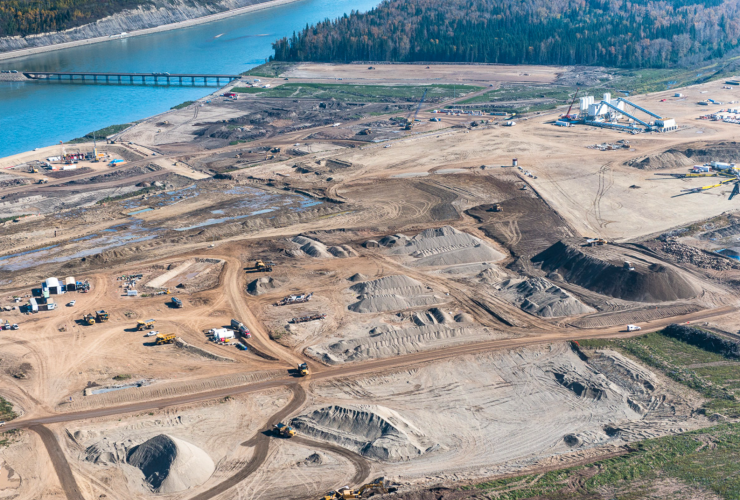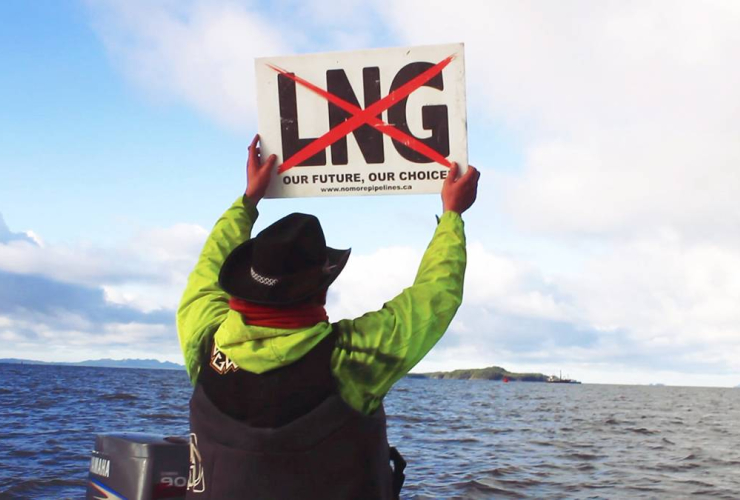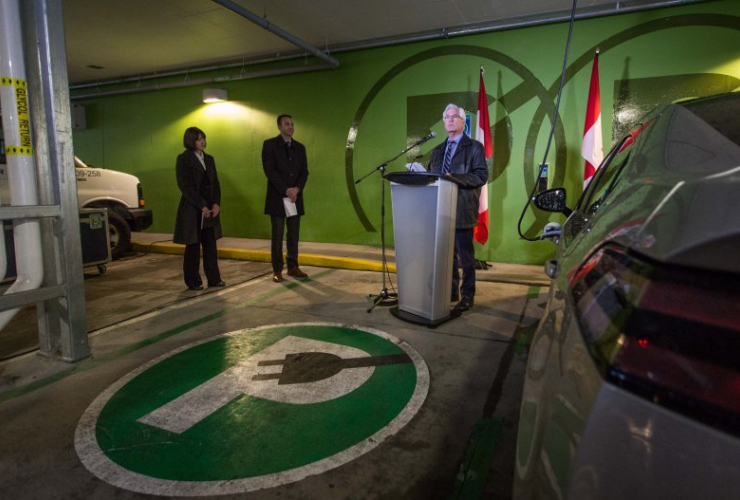For Canadian banks, climate change is no longer just a reputational risk issue to be brushed under the carpet of a slick pubic relations campaign.
The Paris Agreement to phase out energy systems reliant on fossil fuel will mean changes to the credit quality of fossil fuel companies, power utilities, car manufacturers, and other players in Canada's hydrocarbon-heavy economy. There are also implications for the Canadian housing market and consumer credit. The rise of clean energy technology, from batteries to electric vehicles, alongside physical risks from climate change — increased severity of flooding and forest fires — are increasingly hard to ignore.
This means that investors, auditors and regulators need more information from banks on how they are responding to climate change and associated shifts in the energy sector. For example, Canadian oil sands producers are struggling with high costs of extraction, stagnating global oil demand and an exodus of large oil company investors. Shell recently indicated plans to sell $8.5 billion worth of its in situ and undeveloped Alberta oil sands holdings. This increases pressure on Canadian banks to explain themselves as they continue to lend large sums to companies whose future is highly uncertain.
Global accounting firm PwC warns that “if collectively unidentified and unmanaged, credit risk driven by climate policy could concentrate in banks’ lending portfolios and create a systemic risk to financial stability.”
A number of forward-thinking global banks now place climate change firmly within their risk management frameworks and will start to report publicly on the implications of climate change for their lending and trading books. If oil and companies have accessed bank loans on the basis of the future value of large oil sands reserves, for example, and these oil reserves can never be taken out of the ground as a result of policy targets and cheap renewable energy, this could mean bankruptcy and banks saddled with bad loans.
Two Canadian banks join climate risk reporting project
In late July, two Canadian banking giants announced that they are among a group of 11 of the world’s leading banks in a United Nations Environment Program (UNEP) - supported pilot project to develop analytical tools and indicators to strengthen their assessment and disclosure of climate-related risks and opportunities.
TD Canada Trust (TD) and Royal Bank of Canada (RBC) will both dive into international climate change risk reporting, potentially encouraging their peers to follow suit. Bank shareholders should expect all banks in the pilot to report in line with recommendations made by the Financial Stability Board’s task force on climate-related financial disclosures.
The Financial Stability Board (FSB) is an international body that monitors the global financial system. It is chaired by Mark Carney, former governor of the Bank of Canada. The FSB was established following the global financial crisis in 2009 to monitor and make recommendations to support global financial stability. The industry-led FSB task force on climate-related financial disclosures developed voluntary climate-related financial risk disclosure guidelines for companies to inform investors, regulators and other stakeholders.
“The disclosure recommendations will give financial markets the information they need to manage risks, and seize opportunities stemming from climate change,” Carney said. “As a private sector solution to a market issue, the Task Force has focused on the practical, material disclosures investors want and which all capital-raising companies can compile.”
According to Erik Solheim, the head of UNEP, “the message from financial heavyweights is clear – climate change poses a real and serious threat to our economy. At the same time, there are enormous business opportunities in taking climate action. Transparency on how financial institutions mitigate the risks and seize the opportunities of a two degrees pathway is crucial to move international markets towards actively supporting a low-carbon and climate-resilient future.”
Risks and opportunities must be acknowledged
The “two degrees pathway” Solheim describes has significant implications for Canadian banks. The Paris Agreement target to keep global warming below two degrees Celsius means that global carbon emissions should reach net zero by around 2050. The net zero emissions target requires the phasing out of fossil fuel use in energy and transport across the Canadian economy. Whether or not one believes these targets are going to be met, businesses must acknowledge the risks and opportunities linked to the transformation of the global energy sector.
By signing up to report on financially material climate risks and associated opportunities in line with international reporting standards, TD and RBC are setting a new professional standard for management teams in Canadian financial markets.
Once two of our country’s largest banks start reporting on climate risk in their annual reports and in their public management disclosure and analysis, their peers in the financial sector - asset managers, banks, and pension funds - will have to do the same or risk potential legal liability. Test litigation in this area is underway in Australia where shareholders in Commonwealth Bank are suing company management for failure to disclose climate-related business risks.
The Canadian banking sector is highly concentrated, with the 'Big Six' banks (TD, RBC, Bank of Nova Scotia, Canadian Imperial Bank of Commerce, Bank of Montreal, and National Bank of Canada) holding more than 90 per cent of about $3 trillion in assets held in the national banking system.
Bank leadership on climate risk disclosure will send market signal
If they are committed to keeping their investors and market regulators informed of evolving risks, all six of Canada's largest banks would publicly acknowledge the business implications of achieving net zero carbon emissions in the energy and transportation sectors by 2050.
This is what Canada committed to in the Paris Agreement. This would help to trigger action and appropriate risk management responses through the Canadian financial system.
The federal government's recently-established Canada Infrastructure Bank serves as a strong public relations tool to help burnish the Liberals' lip service to climate action. I believe it is far more important to have existing providers of capital respond to the implications of climate change and the energy transition on their business practices.
The government-created infrastructure bank is supposed to invest $15 billion in “green” infrastructure over the next decade, setting an example with a comparatively small fund at its disposal. The big six banks have access to more than $1 trillion in wholesale funding (money borrowed from financial markets), and hold around $2 trillion in retail deposits (individual savings). That is a lot of money with which to respond to the implications of climate change and the transition away from fossil fuels.
A decision to act on climate change and report to shareholders on the transition risks in their lending, underwriting (raising investment capital for other companies, like TD and RBC's work with Kinder Morgan Canada), and other business units would send a strong signal to all capital market participants that the energy transition is gathering pace. It would also make clear that climate-related risk considerations have real implications for the cost of capital and companies' ability to raise money via debt markets.
Standing still on climate change is not an option.







Comments